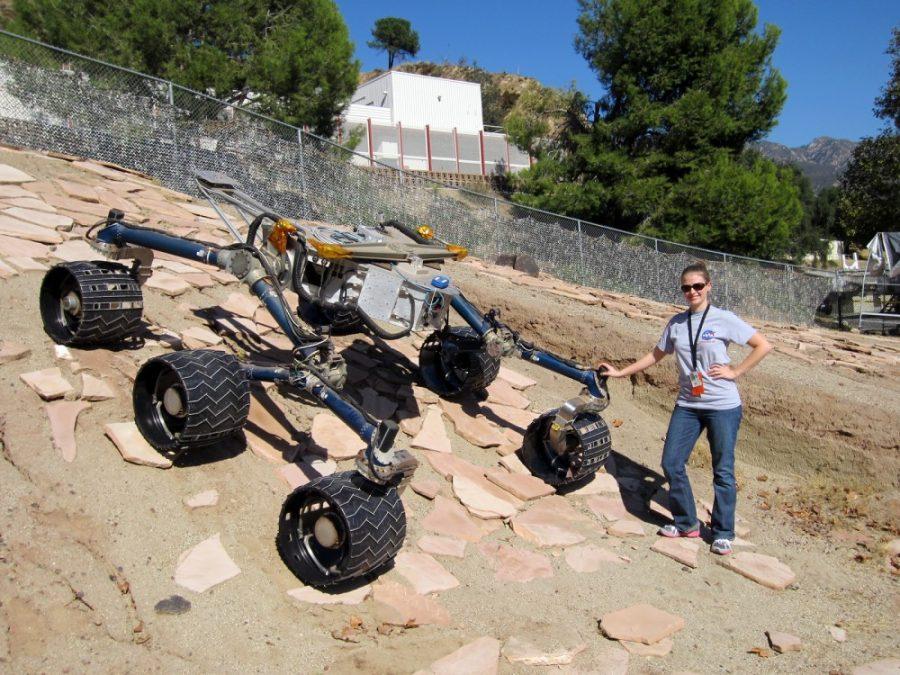Hollywood may have a new reason to be called the land of the stars.
A UA geosciences lab that partners with NASA found clay on Mars similar to clay found in Los Angeles. The clay, along with rock samples, indicates that there could have once been water on Mars, said Robert Downs, a UA geosciences professor and the director of the lab.
The research team found the Earth analog to the Martian clay in Griffith Park, close to where the Batcave from “Batman” is located, Downs said.
“We had NASA scientists crawling up and down the side of the mountain trying to collect samples, and in came a photographer trying to do a fall sweater shoot,” Downs said.
The samples were drilled by the Curiosity rover, which landed on Mars in August 2012. A device on the rover known as CheMin conducted X-ray diffraction analysis that revealed the presence of clay in February 2013, said Shaunna Morrison, a third-year geosciences graduate student. Morrison is the research team’s CheMin specialist.
“This finding validates a lot of ideas about water on Mars,” Morrison said. “It’s one of the more significant studies to date.”
The rover conducts a special kind of X-ray diffraction that uses vibrations to ensure the beam captures all orientations of the sample grains, said Barbara Lafuente, a geosciences graduate student who specializes in X-Ray diffraction data analysis.
“X-ray diffraction basically gives a fingerprint of your mineral,” Lafuente said. “You cannot get it wrong.”
Based on X-ray diffraction, the clay from Mars was found to be composed of water and broken-down olivine, a green mineral used to make gemstones on Earth, Downs said.
The ratio of olivine to water in the clay found on Mars is very similar to the ratio found at Griffith Park, he said.
The rover also captured images of rocks weathered by water that indicate there was once a “high-activity” water source, according to Downs.
“The rocks we found resemble worn cobbles, like you would find in a river bed,” Downs said. “That doesn’t happen because of a little stream seeping by.”
Neutron experiments conducted by the rover that measure the amount of protons present in mineral samples further show there is water in the rock samples collected by the rover, Downs said.
Does that mean there is for sure water on Mars?” Downs asked. “We don’t know that yet.
The team has not yet been able to retrieve water from the clay samples, he said, which are currently being held inside the rover at room temperature.
One explanation for why the clay has not yet secreted water could be that the water is strongly bound to another element, like magnesium, that is preventing it from melting, Downs said.
“Any water that was in liquid form probably existed in Mars’ ancient past, because it’s too cold on present-day Mars,” said Donna Viola, a third-year planetary sciences graduate student whose work focuses on ice and water-induced crater formation on Mars.
“There should be some more exciting results to come out of this mission in the future,” Viola said. “It will be exciting to see what happens.”









